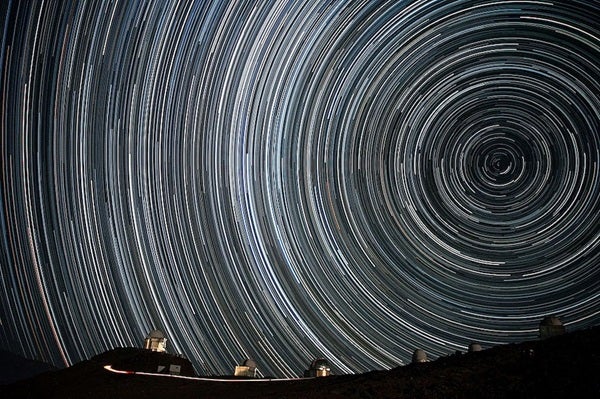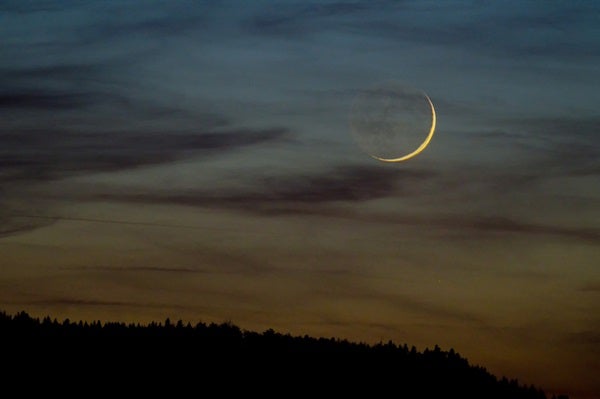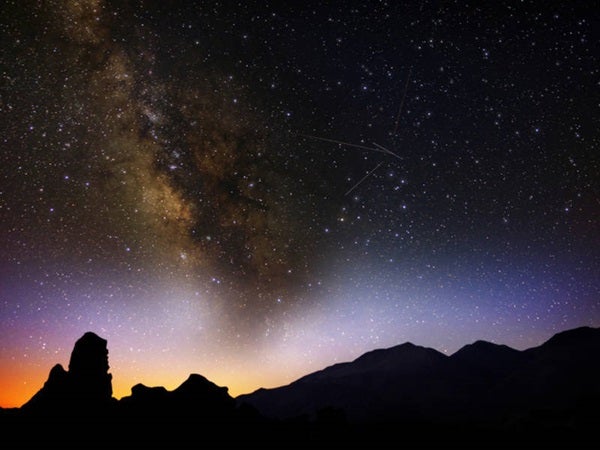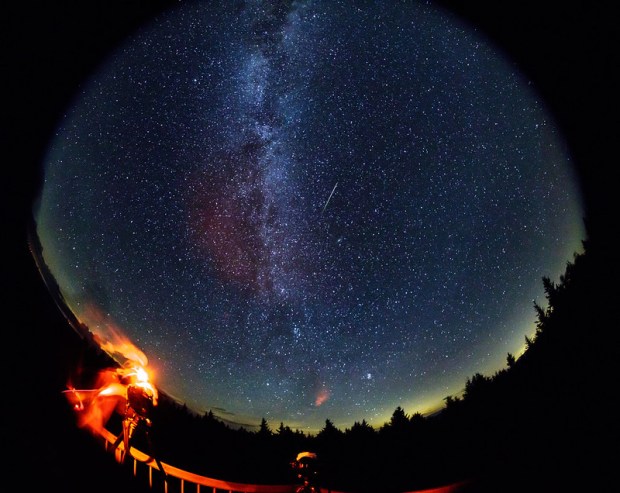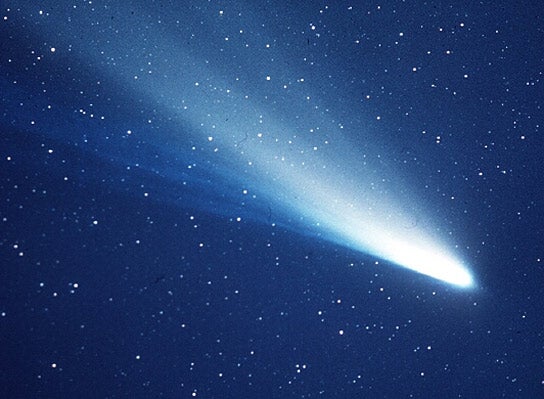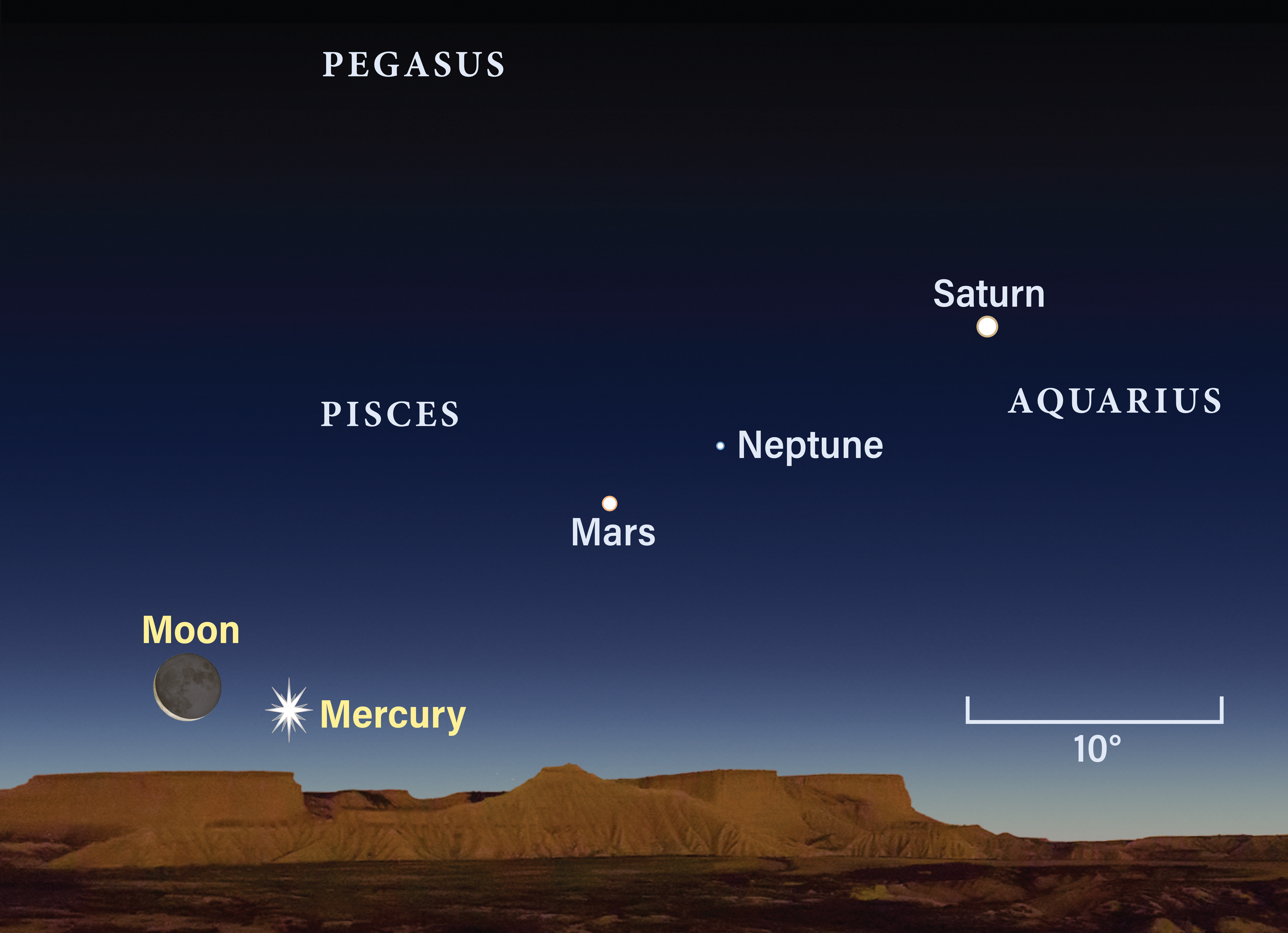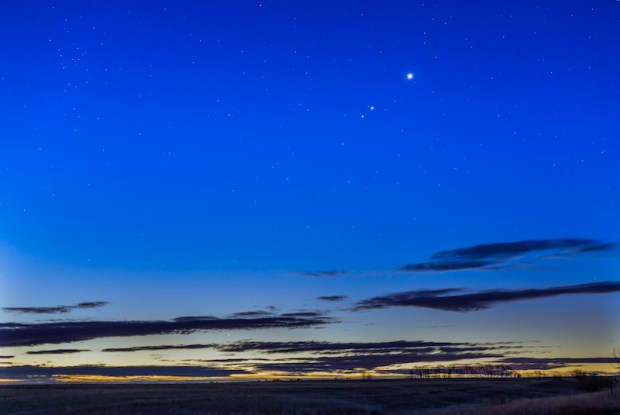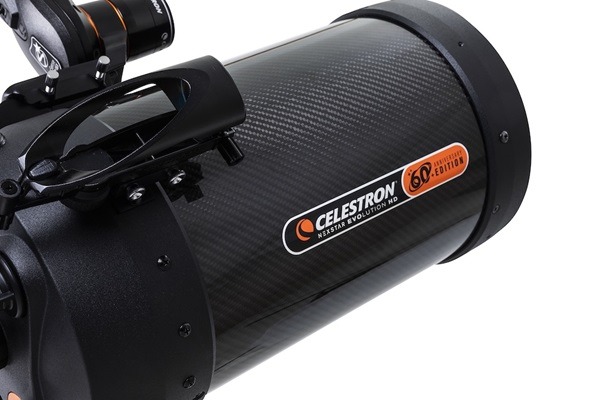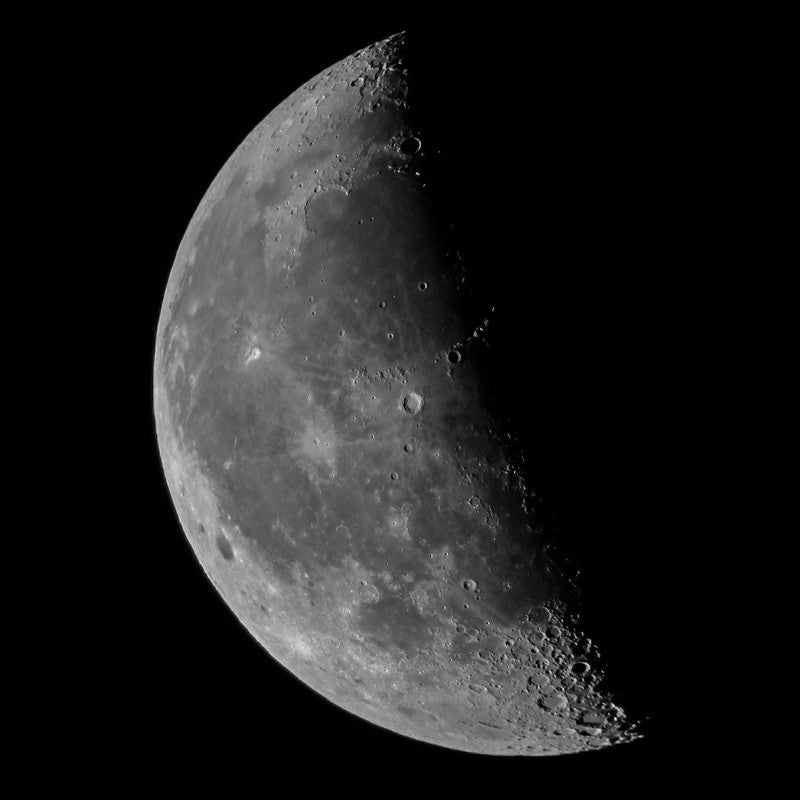Brilliant Venus appears low in the west after sunset all week. Look for the blazing point of light starting a half-hour after sundown, when it stands about 15° above the horizon. The planet shines at magnitude –3.9 and is by far the brightest object in the night sky after the Moon, which won’t return to view for a few days. A look at Venus through a telescope shows an almost fully illuminated disk that spans 11″.
Saturday, April 14
Less than 30 minutes after Venus slips below the western horizon, Jupiter appears low in the east. The giant planet rises by 10 p.m. local daylight time and climbs highest in the south around 3 a.m. Jupiter shines at magnitude –2.4, which makes it the brightest point of light in sky after Venus sets. It resides among the much dimmer stars of the constellation Libra. A telescope reveals the planet’s 44″-diameter disk and a wealth of atmospheric detail.
Sunday, April 15
Dwarf planet 1 Ceres is the largest object in the asteroid belt, which lies between the orbits of Mars and Jupiter. It currently shines at magnitude 8.2 and is an easy object to spot through binoculars or a telescope. Ceres resides in the northern part of the constellation Cancer the Crab, which appears high in the southwest after twilight fades to darkness. This evening, Ceres lies two-thirds of the way between 4th-magnitude Iota (ι) Cancri and 5th-magnitude 57 Cancri.
New Moon occurs at 9:57 p.m. EDT. At its New phase, the Moon crosses the sky with the Sun and so remains hidden in our star’s glare.
Look west after the last vestiges of twilight fade away and you’ll witness the beginning of the winter sky’s decline. By 10 p.m. local daylight time, the lower tier of bright winter stars and constellations barely clears the horizon. From mid-northern latitudes, Sirius in Canis Major, Aldebaran in Taurus, and the three belt stars of Orion the Hunter all stand about 10° high. (Ten degrees is the approximate width of your closed fist when held at arm’s length.) Still, a higher tier of winter stars remains prominent. Look for Capella in Auriga, Castor and Pollux in Gemini, and Procyon in Canis Minor to keep the cold season on our minds — and in the sky — for several weeks to come.
Tuesday, April 17
Evening twilight hosts a stunning pair of solar system objects as a slender crescent Moon appears 5° to the left of Venus. As the sky darkens, the Pleiades star cluster (M45) slowly emerges 9° directly above Venus. Set against the deepening twilight, this fine grouping offers a great photo opportunity.
Saturn rises a little before 1:30 a.m. local daylight time and climbs some 25° high in the south as morning twilight starts to paint the sky. The ringed planet shines at magnitude 0.4 against the backdrop of northern Sagittarius the Archer. When viewed through a telescope, Saturn shows a 17″-diameter disk surrounded by a stunning ring system that spans 39″ and tilts 25° to our line of sight. The outer world reaches two milestones today. From our viewing perspective, its eastward motion against the background stars comes to a halt as it starts to head westward in anticipation of its late June opposition. And from an orbital perspective, Saturn reaches its farthest point from the Sun at 7 a.m. EDT. It then lies 936 million kilometers (1.51 billion kilometers) from our star, its greatest distance since 1959.
Wednesday, April 18
The waxing crescent Moon resides among the background stars of the V-shaped Hyades this evening. The slim crescent lies a little below and to the right of 1st-magnitude Aldebaran, the orange sun that marks the Hyades’ upper left corner. In reality, however, this star is a foreground object that only appears along the same line of sight as the cluster.
If you point a telescope at Jupiter tonight, both of its outer moons, Ganymede and Callisto, appear south of the planet’s disk. This strange sight arises because Jupiter’s south pole tilts 3.4° toward Earth this month, the maximum angle during the planet’s 12-year orbit of the Sun. The modest tilt means the moons’ orbital motions carry them farther north and south of the planet’s center than at other times. The best views tonight come after Ganymede reappears from behind Jupiter’s disk around 11 p.m. EDT.
Uranus is in conjunction with the Sun at 10 a.m. EDT. From our earthly perspective, this means the distant planet lies behind the Sun and so is out of sight. Uranus will return to view in the morning sky in late May.
Thursday, April 19
The Big Dipper’s familiar shape rides high in the northeast on April evenings. The spring sky’s finest binocular double star marks the bend of the Dipper’s handle. Mizar shines at 2nd magnitude, some six times brighter than its 4th-magnitude companion, Alcor. Even though these two are not physically related, they make a fine sight through binoculars. (People with good eyesight often can split the pair without optical aid.) A small telescope reveals Mizar itself as double — and these components do orbit each other.
You can use the Big Dipper as a guide to two of the spring sky’s brightest stars. If you follow the curve of the Dipper’s handle toward the eastern horizon, you’ll easily spot Arcturus. This magnitude 0.0 star, which belongs to Boötes the Herdsman, lies some 30° from the end of the Big Dipper’s handle. It is the fourth-brightest star in the whole sky and the second-brightest visible from mid-northern latitudes. And if you continue the curve another 30° past Arcturus, you’ll arrive at magnitude 1.0 Spica, the luminary of Virgo the Maiden. An easy way to remember the two is with the phrase: “Follow the arc to Arcturus, then drive a spike to Spica.”
The Moon reaches perigee, the closest point in its orbit around Earth, at 10:41 a.m. EDT. It then lies 229,108 miles (368,714 kilometers) away from us.
Saturday, April 21
Mars rises a bit before 2 a.m. local daylight time and appears about 25° high in the south-southeast by 5 a.m. The magnitude –0.1 Red Planet lies against the backdrop of northern Sagittarius, some 10° east of Saturn. When viewed through a telescope this morning, Mars shows a 10″-diameter disk and a few subtle surface details.
Sunday, April 22
The annual Lyrid meteor shower reaches its peak before dawn under good viewing conditions. The nearly First Quarter Moon sets before 2 a.m. local daylight time, leaving nearly three hours of dark skies before morning twilight commences. The shower’s radiant — the point in the constellation Lyra the Harp from which the meteors appear to emanate — climbs nearly overhead just before twilight starts to break. Under a clear dark sky, observers can expect to see 15 to 20 meteors per hour.
You can find the First Quarter Moon high in the southwest as darkness falls, then watch as it sinks toward the western horizon, where it sets shortly after 2 a.m. local daylight time. Our satellite officially reaches its First Quarter phase at 5:46 p.m. EDT. The half-lit Moon spends the night among the background stars of central Cancer the Crab.

